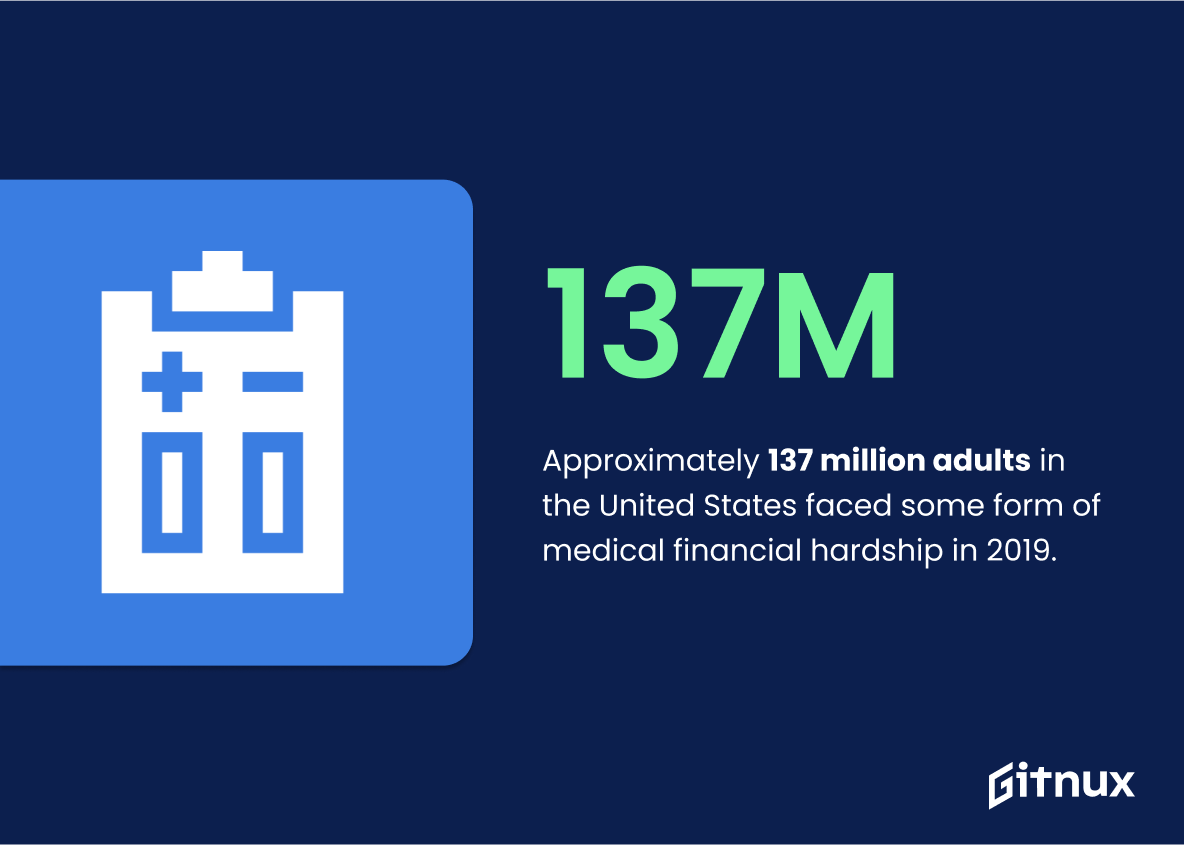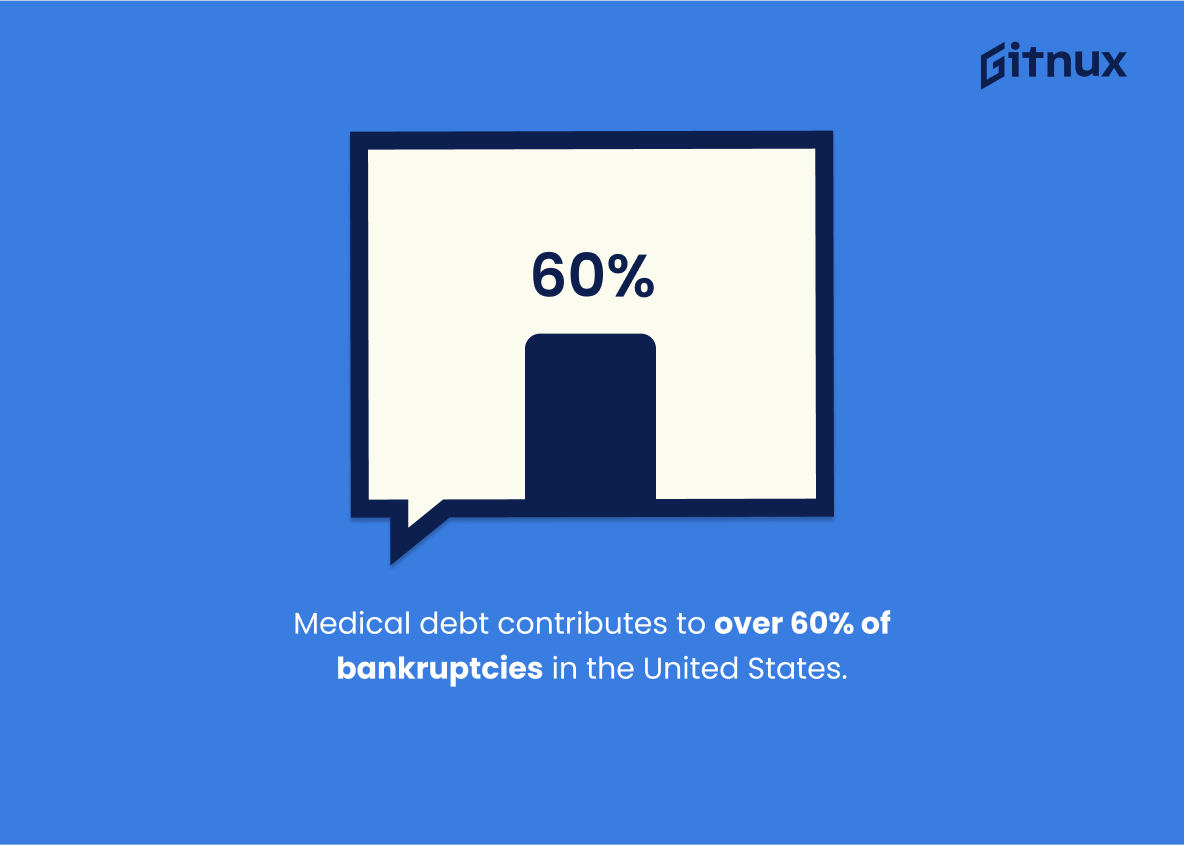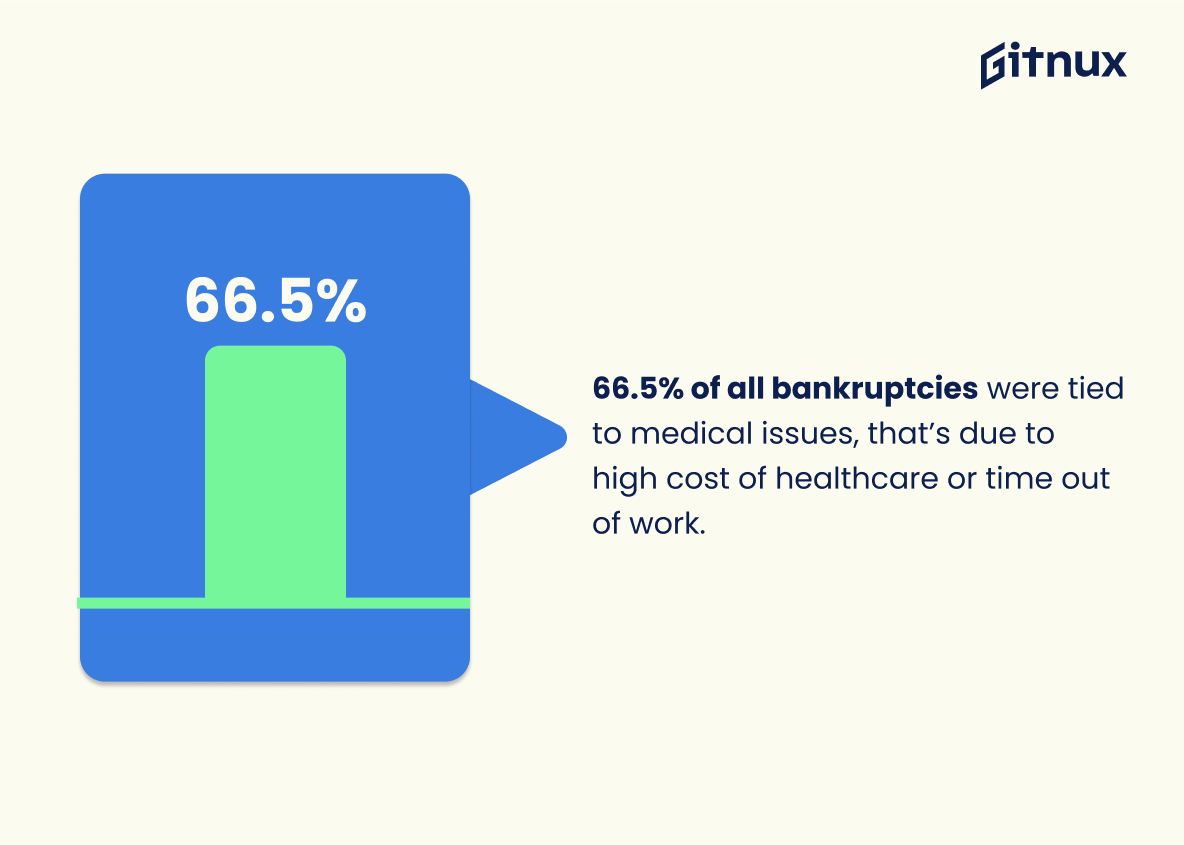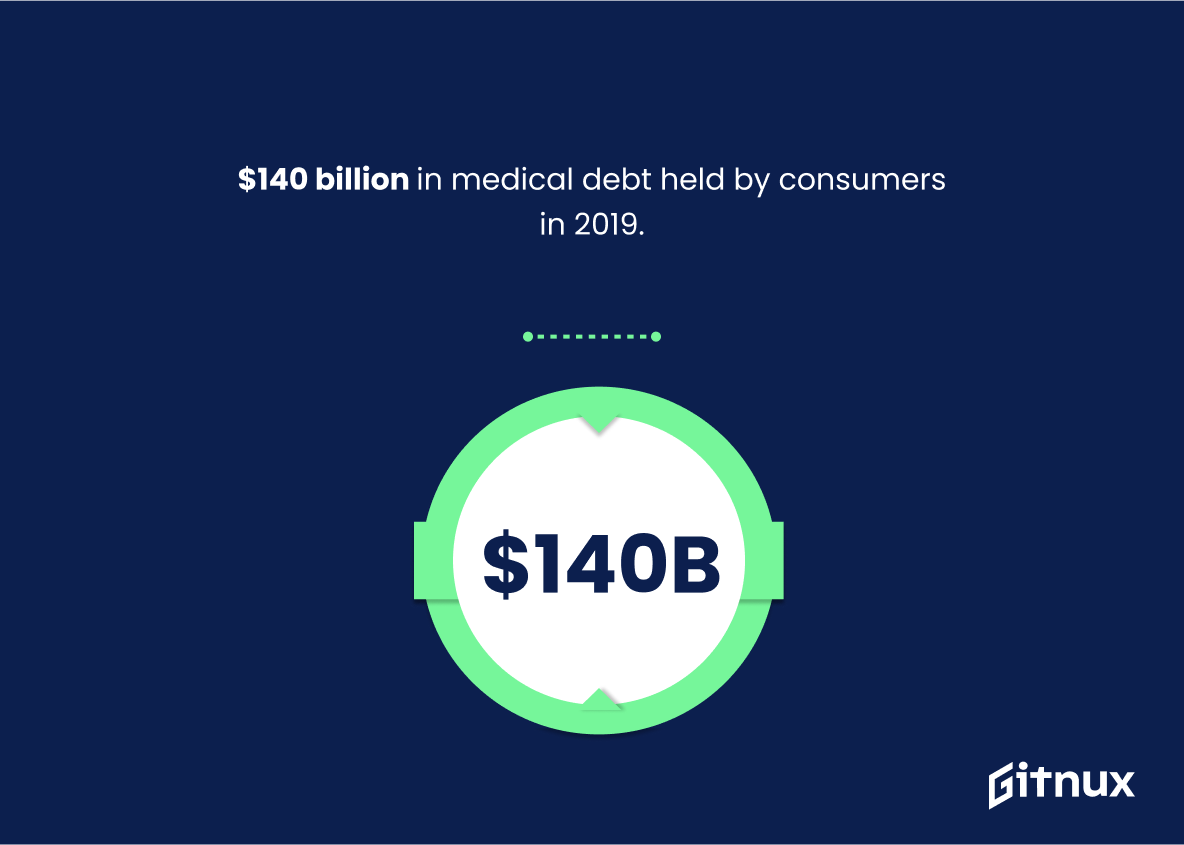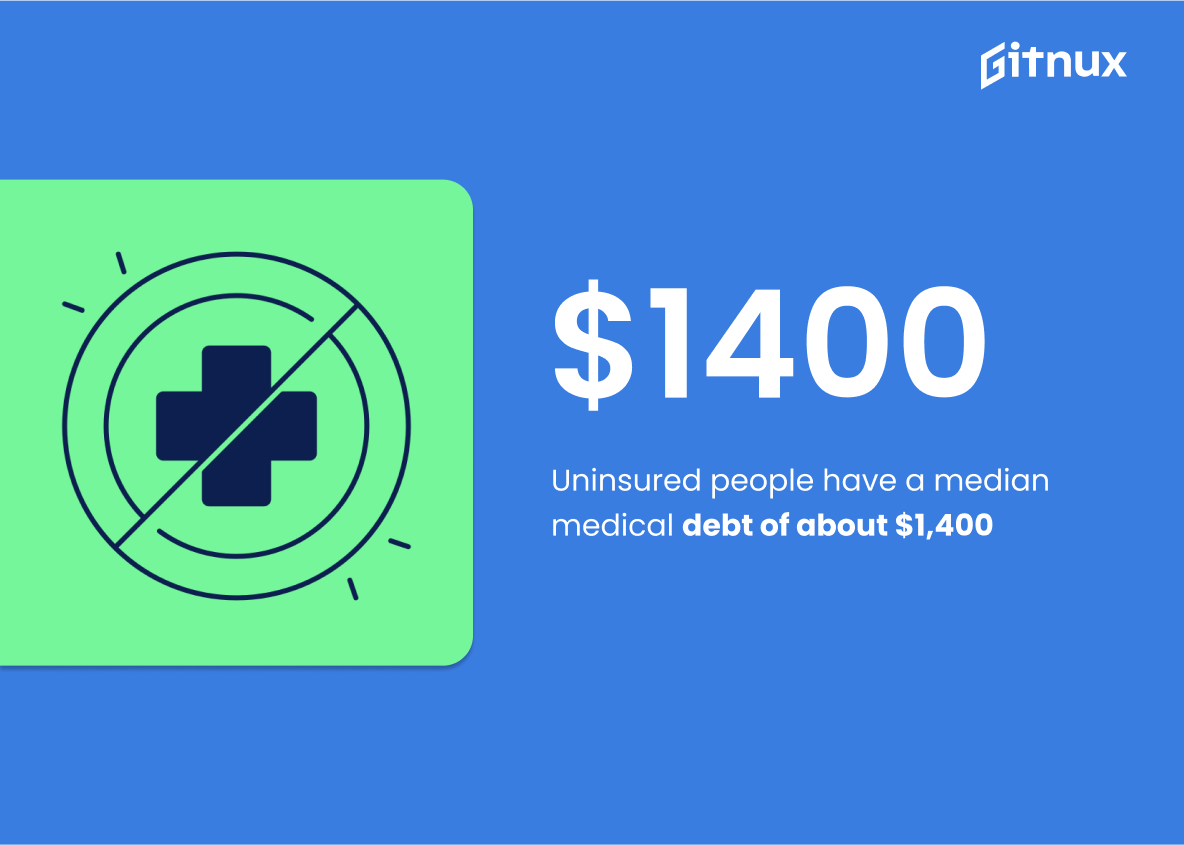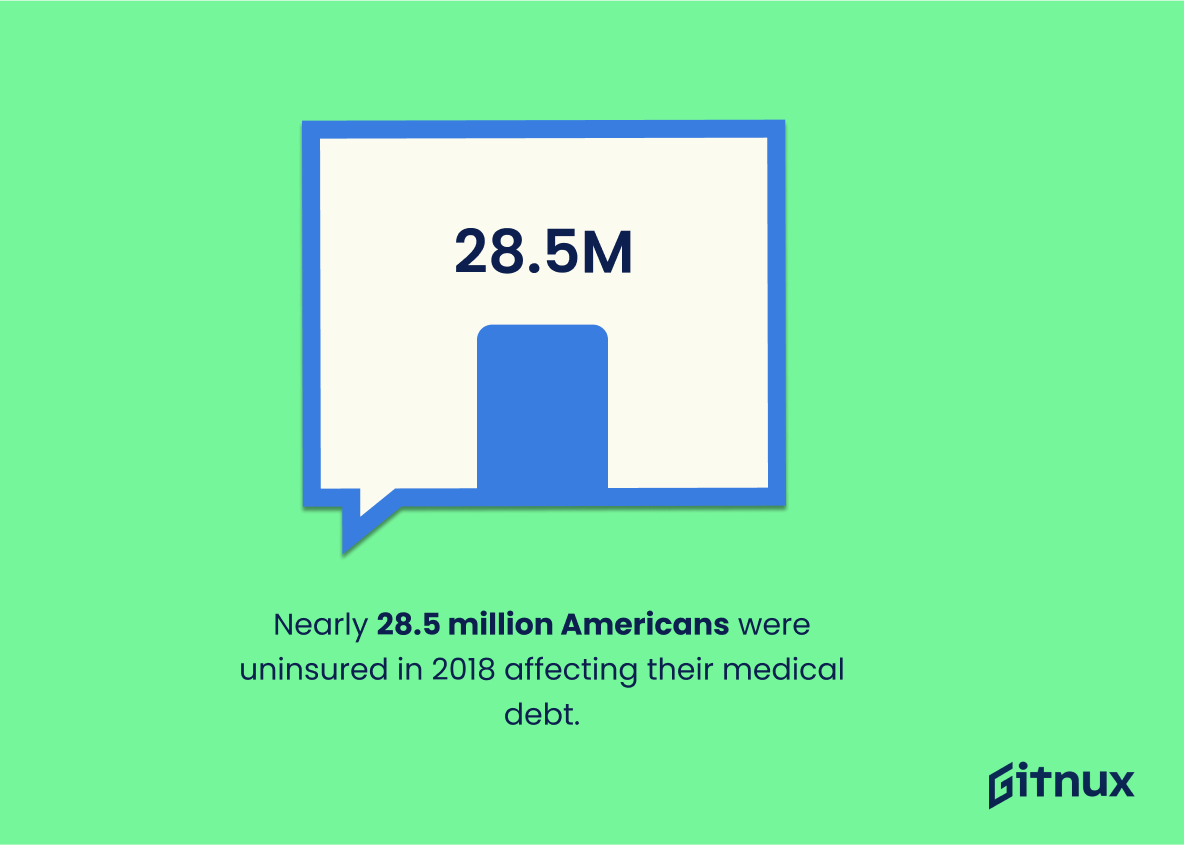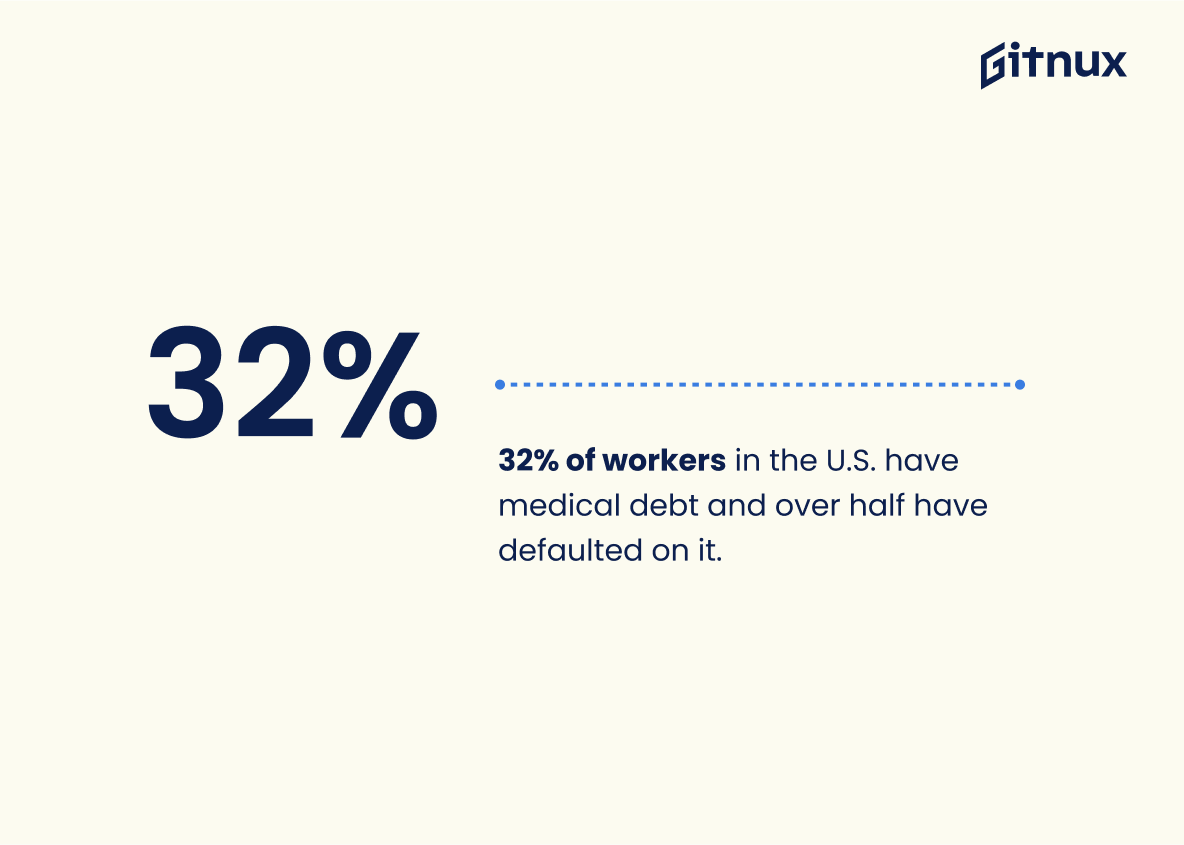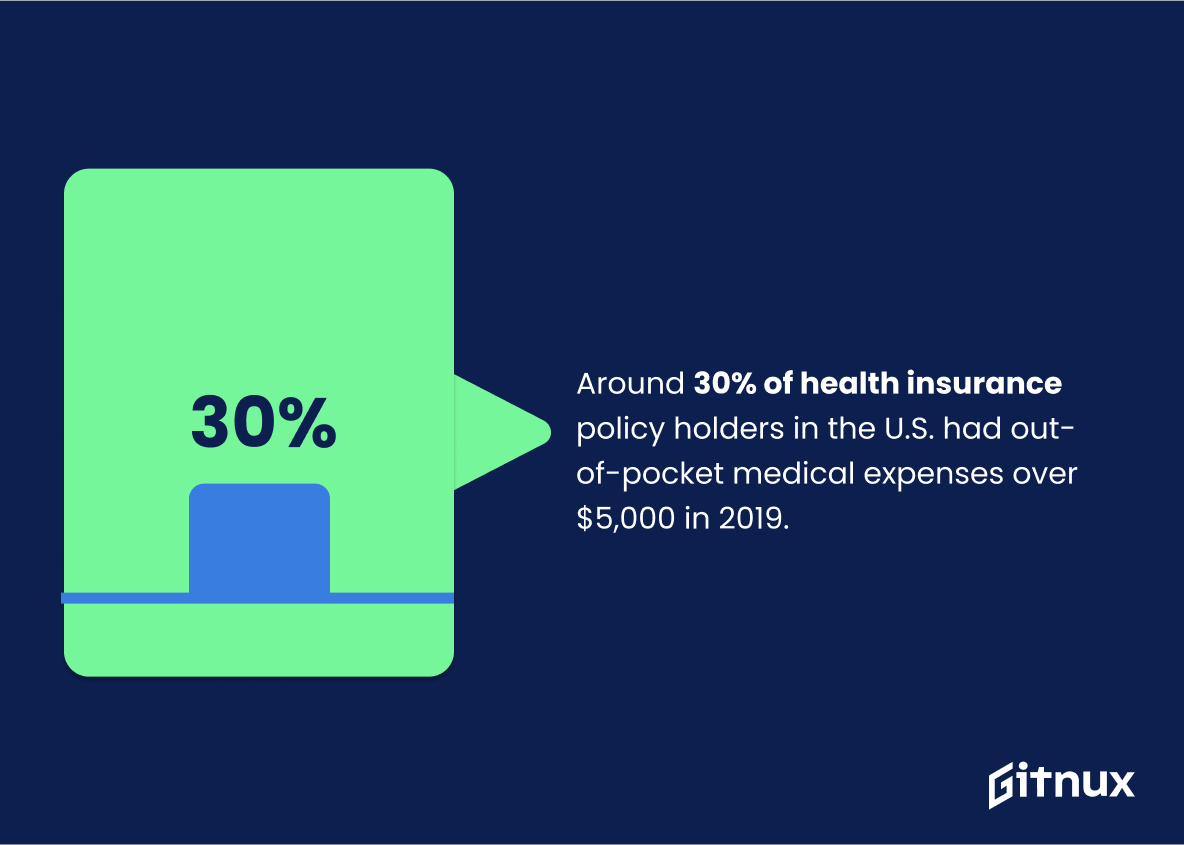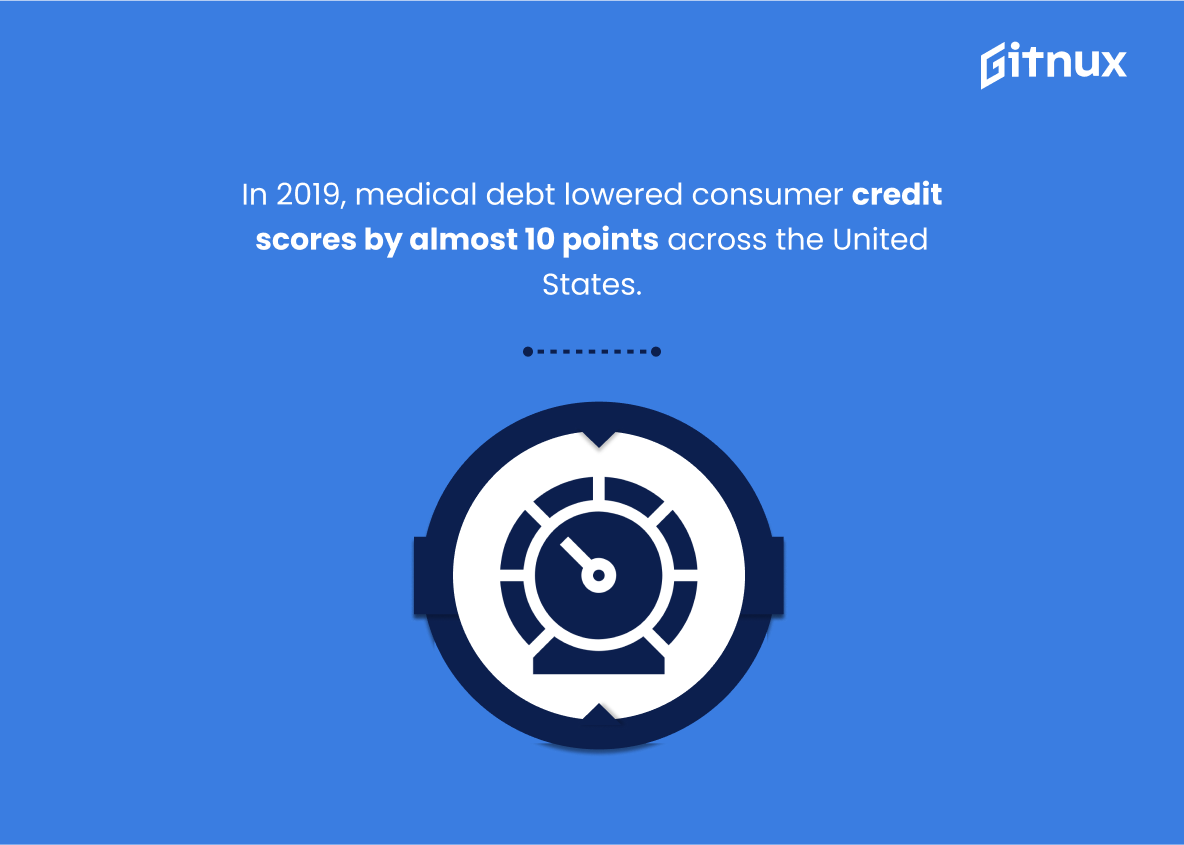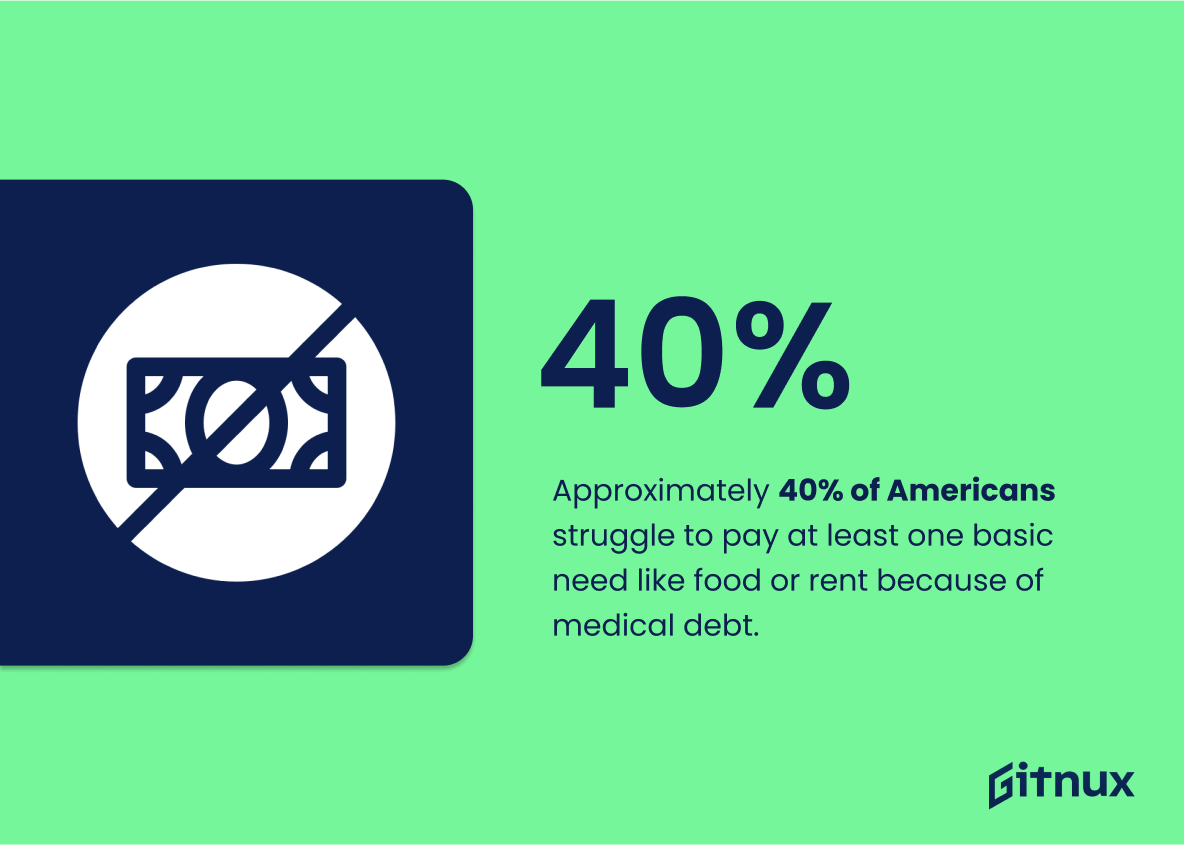For a significant number of Americans, medical debt is the giant elephant in the financial room—impossible to ignore, yet often difficult to discuss. Its gravitational pull reverberates through all spheres of life, casting a shadow over personal and family financial health. With spiraling healthcare costs and stagnating wages, the accumulation of medical debt has become an unfortunate reality. Our blog post this week dives deep into the expansive ocean of medical debt statistics, unraveling its complex intricacies and painting a clear picture of its widespread impact. Prepare to be startled, enlightened, and hopefully, better equipped with insightful knowledge to navigate this challenging phenomenon.
The Latest Medical Debt Statistics Unveiled
Approximately 137 million adults in the United States faced some form of medical financial hardship in 2019.
Highlighting the struggles of an approximate 137 million adults in the United States who faced financial hardship due to medical expenses in 2019 injects a robust dose of reality into the narrative on Medical Debt Statistics. It serves as a nerve-jarring alarm, urging further exploration into the depth of this issue. Additionally, it empowers readers to understand the sheer magnitude of this challenge, inspiring dialogue, fueling debates, and igniting a call for actionable measures. It forms a powerful cornerstone of our blog post, and acts like a mirror, reflecting a harsh reality existing in society, tinged with real-life stories of strenuous efforts, anxiety over mounting bills, and resilience to fight medical adversities. This number, more than just a statistic, is a national concern, underlining an urgent need for comprehensive healthcare reforms. It reinforces our commitment to raise awareness, inform policy-making, and inspire collective action to address this pressing concern.
Medical debt contributes to over 60% of bankruptcies in the United States.
Highlighting this compelling figure serves as a blazing marker emphasizing the immense financial impact medical debt has on American households. The harsh reality of over 60% of U.S. bankruptcies being linked to medical debt underscores the devastating hurricane at the intersection of health and finance. This statistic, woven into a blog article on medical debt statistics, provides a solid anchor point for readers, painting a vivid, tangible picture of how dire the situation truly is. It provides the groundwork for the exploration of a complex issue, vividly initiating a conversation that begs awareness, compassion, and most importantly, action. It’s a resounding gong that can’t be ignored, signalling the urgent need for systemic healthcare reforms, insurance policy optimizations and efficient medical financial management strategies.
As of 2021, 1 in 5 Americans are in collections for medical debt.
Highlighting the statistic, “As of 2021, 1 in 5 Americans are in collections for medical debt,” serves as a sharp-edged reminder of the spiraling vortex of financial distress orbiting the world of healthcare. This alarmingly vivid data point underscores the real-world impact medical costs have on American citizens, showcasing the gravity of the issue in a single, digestible piece.
Envisioning 20% of the U.S populace grappling with collections due to medical debt helps the readers picture the breadth of the problem. One could almost sense the relentless phone rings, the constant anxiety looming over five-cornered kitchen tables, and the silent hope for relief. This isn’t an abstract figure; it’s a chilling reflection of the daily struggles thousands of individuals and families endure—an urgent call for attention and advocacy in medical debt discussions.
Additionally, this crucial piece of information begins to unravel the intertwined complexities between healthcare, personal finance, and the American debt culture. It sets a tone for a deep dive into the daunting world of medical debt, hinting at the broader implications for financial security, mental well-being, and socio-economic disparity across the nation.
In essence, exploring this statistic gives the readers a valuable perspective, a feeling akin to stepping onto a panoramic point—presented with a wide and unsettling view of the escalating medical debt crisis, uncovering an important narrative that needs to be told.
66.5% of all bankruptcies were tied to medical issues, that’s due to high cost of healthcare or time out of work.
The illumination of the statistic that 66.5% of all bankruptcies are linked to medical issues serves as a potent reminder of the dire financial calamity many individuals face due to the escalating costs of healthcare or disrupted income due to illness or injury. This percentage, a stark representation of reality, is not merely a number but a collection of personal stories swathed in financial turmoil precipitated by health-related predicaments.
In the kaleidoscope of medical debt statistics, this factoid stands as a somber centerpiece. It’s as if we’re navigating through an iceberg field, where the visible part barely hints at the enormous financial devastation lurking beneath the surface. This narrative pivots our attention towards the often overlooked catastrophic consequence of an illness or a mishap – bankruptcy, laying bare an issue which remains a secret for many.
Connecting the seriousness of this dilemma to the broader economic and societal fabric, we are encouraged to question and eventually deconstruct our collective approach towards healthcare funding and access. Every mention of this figure, therefore, is not just a casual stroke on the mental canvas of the reader, but a call to action and further dialogue on the crucial intersection of health and wealth.
$140 billion in medical debt held by consumers in 2019.
The colossal figure of $140 billion in medical debt held by consumers in 2019 paints a sobering picture of the financial burden shouldered by many. This numeric goliath holds the key to understanding the magnitude of the medical debt issue in the United States, giving us perspective on the gravity of the problem. It’s a testament to the unseen battles many face, tucked away from the public view, against invoices, payment reminders, and collection agencies. It helps us appreciate the scale of the economic health crisis lurking behind closed doors, marking each dollar as a unit of struggle against an unrelenting financial adversary. This statistic shapes the narrative of the blog post, allowing the audience to grasp the profound implications of this pervasive issue.
The median amount of medical debt is higher for people without health insurance, sitting at around $1,400.
The profound implication of the statistic that those without health insurance experience a higher median medical debt of $1,400 paints a stark picture of the burden they bear. It serves as a vibrant stroke of color on the canvas of our discussion about medical debt statistics. By spotlighting this figure, we amplify the conversational resonance on the critical role that health insurance plays in mitigating the financial strain of medical expenses. The $1,400 figure doesn’t simply scream of disparity, but acts as a clarion call to the necessity and potential benefits of obtaining reliable health insurance coverage. This singular string of digits illuminates the vast economic chasm between those protected by insurance and those left vulnerably exposed to the specter of seemingly insurmountable medical debt.
Nearly 28.5 million Americans were uninsured in 2018 affecting their medical debt.
Delving into the world of Medical Debt Statistics, it’s not surprising to chance upon the staggering figure that nearly 28.5 million Americans found themselves uninsured in 2018. By donning the cap of the uninsured, this diverse group has subtly yet prominently contributed to the growing iceberg of America’s medical debt. Their uninsured status morphs into a delayed fuse, which over time, sparks into unexpected medical costs for routine or emergency care. This invisible yet potent link between being uninsured and relating to higher medical debt provides the crucial storyline in our narrative on medical debt statistics. The shifting dynamics of this figure elucidates political, economic, and social decisions, weaving it into a relevant backdrop to understand the burgeoning challenge of medical debt.
32% of workers in the U.S. have medical debt and over half have defaulted on it.
Painting a vivid picture of the U.S workforce, this significant statistic highlights how nearly one-third grapples with medical debt, plunging further into the abyss with over half of them defaulting. This striking snapshot creates a critical connection, throwing light on the rampant issue of medical debt and its fallout. Within the context of a blog post about Medical Debt Statistics, this compelling number serves as a stark signpost of the urgent need for comprehensive solutions and initiates a meaningful dialogue about broad-spectrum health care affordability and economic stability.
Around 30% of health insurance policy holders in the U.S. had out-of-pocket medical expenses over $5,000 in 2019.
The dynamic landscape of health care in America is put into sharp relief with the revelation that approximately 30% of health insurance policy holders in the U.S. encountered out-of-pocket medical expenses exceeding $5,000 in 2019. This emphasis forms the cornerstone of our discussion on Medical Debt Statistics, painting a stark picture of the financial burden many individuals and families are faced with, despite possessing health insurance coverage. It imbues the narrative with a sense of urgency and invites a closer inspection into the challenges of out-of-pocket expenses. Crucially, it pushes the dialogue further to seek possible solutions. This is not just a percentage, it is a mirror into the realities many Americans grapple with, stirring a potent conversation on the real cost of health in America.
In 2019, medical debt lowered consumer credit scores by almost 10 points across the United States.
The revelation that, in 2019, medical debt shaved nearly 10 points off consumer credit scores nationwide, serves as a compelling cornerstone in our exploration of Medical Debt Statistics. This numerical testament to the challenge faced by many, reshapes our understanding of the landscape of financial health, as it directly correlates medical expenses to personal creditworthiness. Such a snippet of information isn’t just a percentage on paper, but a resounding gong that brings an alarming reality into focus – the profound impact of medical costs on financial stability in the US. It underscores the urgency for solutions in addressing not only the direct burden of medical debt, but also its penetrating after-effects, such as the erosion of credit scores, often the backbone of economic opportunity.
Approximately 40% of Americans struggle to pay at least one basic need like food or rent because of medical debt.
Reflecting on this striking statistic—almost two-fifths of Americans find it challenging to cover essential needs like food or rent due to medical debt—casts a stark light on the burden healthcare expenses are imposing on everyday citizens. It’s not just numbers; it’s a significant portion of the American population trading basics for medical expenses.
In the tapestry of medical debt statistics, this statistic weaves a narrative of sacrifice and struggle. This is where the raw data intersects profoundly with human stories, transforming our exploration of medical debt from an abstract overview to a vivid, tangible reality. A reality where 40% of Americans, our neighbors and friends, are confronted with the harsh choice between addressing their health or keeping their homes warm, their plates full.
In light of a blog post about Medical Debt Statistics, this fact forms a compelling cornerstone. It underlines the magnitude of the issue, casting its shadow across the lives of millions, where daily survival and medical necessities are continuously at odds. It serves not only as a clarion call for systemic change, marking the need for improvement and reform, but also as an invitation for readers to delve deeper into understanding the human cost behind the medical debt crisis.
Over 43 million Americans have delinquent medical debt on their credit reports.
Highlighting the statistic of over 43 million Americans reeling under the weight of delinquent medical debt is like vividly sketching the stark financial landscape caused by health-related expenses. This number, staggering in its dimension, gives readers an unfiltered look into the immense reach of medical debt crisis in the United States, building awareness of the severity of the situation. The chilling reality of this statistic acts as an eye-opener, setting the tone for an engaging, intriguing and insightful blog on Medical Debt Statistics. It compels the reader to contemplate the scale of the issue, its implications on the economic health of the nation and the need for more viable financial solutions to this debilitating problem. In the wider context, this statistic serves as a launching pad for discussions about healthcare reform and financial security.
In 2016, nearly 20% of U.S. residents under 65 had unpaid medical bills.
Understanding the impact of medical debt on citizens of the U.S., the said statistic paints a riveting picture of the financial strain that healthcare expenses impose. Especially for those under 65, who typically are part of the active workforce, an unpaid medical bill indicates serious fiscal stress and the potential for significant financial instability. While this figure only represents a snapshot in time (i.e., 2016), it nonetheless underscores the enduring problem of incurring overwhelming medical expenses. Sunlight shed by this statistic could stimulate policy makers, insurers, and healthcare professionals to investigate ways to reduce healthcare costs and address the problem of medical debt.
About 25%m of U.S. adults said that they or someone in their household had medical debt in 2018.
Delving into the depths of Medical Debt Statistics, the revelation that approximately one-fourth of U.S. adults acknowledged having medical debt in their household in 2018 provides a startling clarity. This information instantly paints a picture of the widespread influence of medical expenses on the average American, punctuating the severity of this issue within the broader economic landscape. Notably, this number distills the abstract complexity of medical debt into a strikingly tangible reality, allowing readers to understand the substantial impact this issue has on everyday life for many individuals. Highlighting this statistic enlivens the discourse on medical debt, bolstering the urgency for accessible healthcare solutions and policy reforms.
Conclusion
In conclusion, the statistics surrounding medical debt underscore a sobering reality faced by many Americans today. Whether it’s caused by a sudden illness, chronic disease, or even a lack of adequate insurance, medical debt continues to contribute significantly to financial instability. It’s critical that we continue seeking comprehensive solutions to alleviate this strain, promoting affordable health care and ensuring proper legislation to protect individuals from crushing medical debt. The magnitude of this issue highlights the pressing need for reform within our healthcare and financial infrastructure to aid those already entrapped by medical debt and to prevent similar circumstances in the future.
References
0. – https://www.www.consumerfinance.gov
1. – https://www.jamanetwork.com
2. – https://www.www.ncbi.nlm.nih.gov
3. – https://www.www.federalreserve.gov
4. – https://www.www.census.gov
5. – https://www.aspe.hhs.gov
6. – https://www.www.cnbc.com
7. – https://www.www.kff.org
8. – https://www.www.urban.org
9. – https://www.www.consumerreports.org
10. – https://www.www.carepayment.com
11. – https://www.www.fool.com
